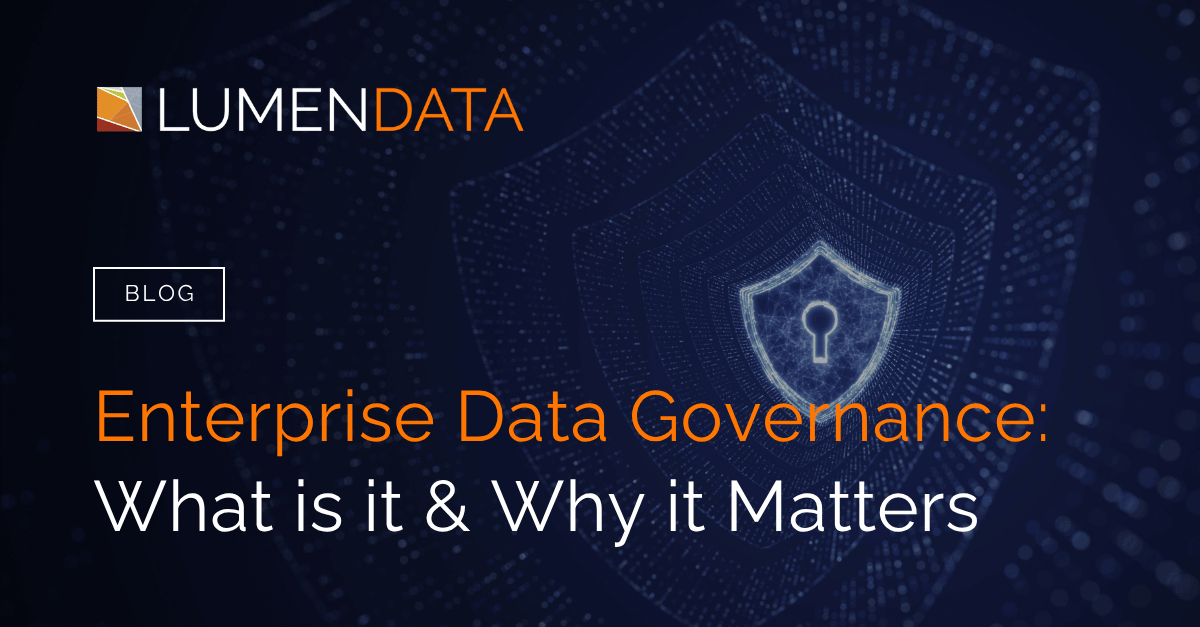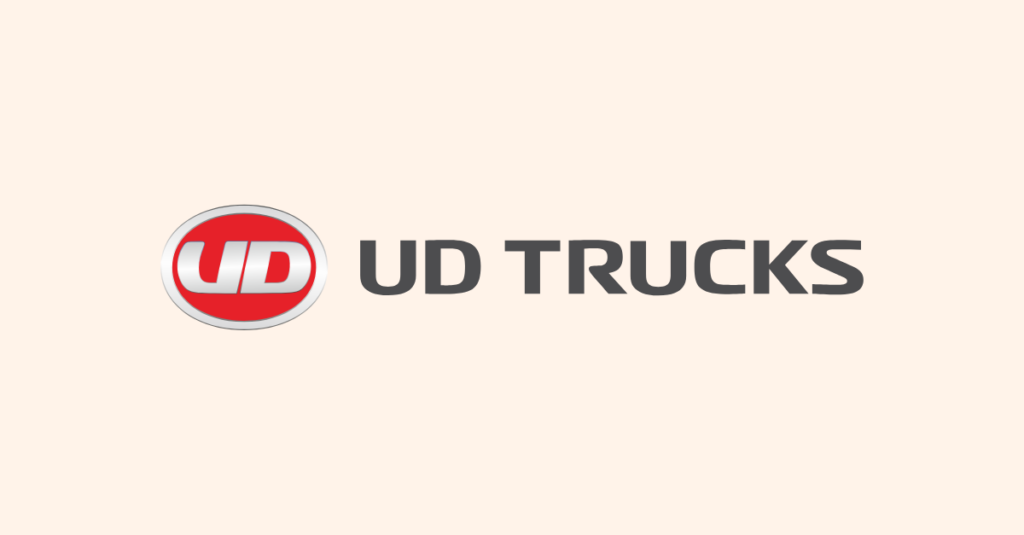Share this on:
What You'll Learn
If you think enterprise data governance is optional, you’re mistaken. It’s a must! If you don’t prioritize it soon, the repercussions could be bad. Gartner says that by 2027, 60% of companies will fail to realize AI value due to lack of a good data governance framework.
This blog will help you understand what enterprise data governance means and why you should do it. We have also covered some trends shaping the concept. Read on.
What is Enterprise Data Governance?
Enterprise data governance is defined as the comprehensive management of data availability, data usability, data integrity, data security, and data compliance across your entire organization.
Please note that this is not some ad hoc or departmental data management effort. Enterprise-level governance is strategic, scalable, and aligned with business objectives.
Here is what it means:
- It sets the rules, roles, responsibilities, and processes that ensure high-quality, trusted data is available for decision-making.
- It involves everyone – your IT teams, business users, compliance teams, and data consumers. Everyone plays a critical role in how data is handled and protected.
Data Governance is the specification of decision rights and an accountability framework to encourage desirable behavior in the valuation, creation, storage, use, and deletion of data.
Simply put, enterprise data governance is the system that ensures that the right people have the right data in the right condition at the right time.
In an enterprise setting, data governance is not limited to one system. It is spread across multiple systems, departments, geographies, and use cases. Hence automation, data stewardship, and policy enforcement become critical.
You will require data governance to build trust in data so that you can:
Why Enterprise Data Governance Matters
As explained above as well, enterprise data governance makes your data – usable, trustworthy, and protected. Here are some reasons you should prioritize governance for your organization:
Costs & Risks – Both are Reduced
We will cover two things here – the reduced cost aspect and better risk mitigation that come with enterprise data governance.
As per a McKinsey report, organizations with $5 billion in operating costs allocate over $250 million each year to data architecture, sourcing, and governance. But if these organizations tighten governance practices from the start, they can reduce that spending by up to 15%, cut out redundancy and improve efficiency. This was the cost part.
Let’s move to the risk mitigation part.
Now, risk isn’t just financial. Innovation failure is also a business risk. Gartner’s research says that 30% of generative AI projects will fail due to poor data quality. But with a solid governance framework, enterprises can facilitate the flow of good quality data and help you avoid risks associated with innovation projects.
Efficiency across your teams gets improved
It can get frustrating to work with inconsistent and incomplete data. Enterprise data governance helps ensure that you don’t get to interact with such data. Forrester reinforces that without governance, only 10% of organizations reach advanced insight capabilities. Strong data governance means that your teams can enable cleaner data pipelines and faster decision cycles across different departments.
Better data trust. Better decision quality.
One question – can you scale intelligent systems or intelligent decisions on untrusted data? No, right? Data governance creates a single version of truth that everyone can rely on. It ensures data consistency across business units.
And this eliminates one common organizational struggle – the struggle of comparing different reports or versions of the same dataset. It’s simple. When your business teams believe in the data they work with, they move with more confidence and make better decisions.
You get prepared for AI and compliance
Please remember that governance is quickly becoming a competitive differentiator in the era of AI and automation. It is fast becoming core to how enterprises operate and compete. In particular, large language models are poised to be among the most transformative technologies of the coming decade. But with this shift comes increased regulatory scrutiny.
It is necessary to conduct structured oversight of how AI models are developed, trained, monitored, and most critically, the data that’s provided to them. Regulators now see data quality and data lineage as compliance requirements. And data governance helps you deliver just the right kind of data needed for AI and compliance.
Core Pillars of Effective Data Governance
Policy, Accountability, & Execution
If you want to facilitate effective governance, you need to start with clear policies on data quality, data privacy, and retention. These standards ensure consistency across systems. You can divide responsibilities like this – business leaders can make policy decisions and data stewards can implement and monitor them within their domains.
Metadata & Lineage Visibility
Do you know where your data comes from? Or how it moves and who touches it? Metadata is one of the most important pillars of data governance. Rich metadata builds trust and supports compliance at every step.
Security & Privacy
This pillar involves role-based access to data and data privacy and security methods like data masking. It’s necessary to meet regulatory benchmarks like GDPR, CCPA, and HIPAA. Data governance enforces protections that align with regulations and reduce risk.
Measurement & Adaptability
A failing governance program is one no one measures. You are required to tackle adoption, data quality, and policy effectiveness. Use those insights to evolve your data governance program and keep governance relevant.
Scalable Technology Foundation
One thing that you must note is that governance needs tooling to operate effectively at scale. Modern tools like catalogs, lineage engines, and automated controls help enforce governance across your complex, hybrid data environments.
Data Governance Implementation Steps
1. Do an Initial Assessment
The first step is to audit your current data landscape. By doing this, you would be able to understand domains with the greatest risk or opportunity. This will, further, help you map ownership, quality, and policy gaps.
2. Form a Cross-Functional Council
This is simple. Establish a data governance council with senior members from business, IT, legal, and analytics. Having a council will enable better focus and accountability on strategic data priorities.
3. Define Policies with KPIs
A governance program without defined KPIs is of no use. It is important to set measurable policies. For example: Setting up a goal like – 100% of customer records must be validated. Link KPIs to outcomes like cost savings. Stakeholder collaboration ensures adoption and governance becomes a visible business enabler.
4. Leverage the Power of Tooling and Automation
Deploy data governance platforms that deliver cataloging, policy automation, lineage tracking, and self-service data access. Some leading tools support proactive enforcement at both ingestion and consumption stages. Some modern data platforms that you could use include Informatica, Databricks, Reltio, and Snowflake.
5. Iterate, Iterate, and Scale
Learn how to treat governance as evolutionary. Regularly review data quality statistics, policy adherence, and value creation. Gartner notes 80% of governance efforts fail without measuring meaningful business outcomes . Hence, it’s important to build momentum through impactful wins and phased expansion.
Trends Shaping Enterprise Data Governance
AI-Powered Governance: Traditional data governance is evolving into an intelligent, automated discipline. Automated metadata classification and policy enforcement are becoming standard. Gartner predicts GenAI will accelerate governance program delivery by 40% by 2027.
Data-as-Product Strategy: McKinsey reports that treating data-as-a product leads to 90% faster use-case delivery and 30% lower total cost of ownership. This approach turns data from a backend asset into a front-line enabler of business outcomes. Let’s understand this. By following this approach, governance responsibilities get closer to domain experts. It enables real-time data stewardship, data quality enforcement, and policy alignment at the source. Business teams don’t have to rely solely on centralized data governance. You build federated models where each domain team owns, governs, and maintains the quality of their own data products.
Governance for AI Ethics & Compliance: AI governance is moving beyond model performance to include ethical and legal accountability for both data and algorithmic decisions. Enterprises must now track model lineage, audit data inputs, and implement bias detection mechanisms. All can be governed under a unified framework. Regulatory bodies now expect organizations to show proof of data sources, consent, and fairness. What does this mean? Simple. Governance is a cornerstone of responsible AI and not just a supporting function.
Choose LumenData for Establishing Robust Data Governance Across Your Enterprise
LumenData provides top-class data governance consulting and implementation services in the U.S. We provide you with a comprehensive data governance framework that ensures data quality, data lineage, and policy compliance. All of this makes your enterprise analytics and AI ready.
Here’s why you should choose us:
- Team of 150+ consultants with experience in Informatica MDM SaaS, Reltio, Snowflake, Databricks, AWS, and other leading technologies.
- 270+ certifications by leading data technologies.
- Automation tools & accelerators to reduce project implementation time by 2 months.
Connect today to learn more.
About LumenData:
LumenData is a leading provider of Enterprise Data Management, Cloud and Analytics solutions and helps businesses handle data silos, discover their potential, and prepare for end-to-end digital transformation. Founded in 2008, the company is headquartered in Santa Clara, California, with locations in India.
With 150+ Technical and Functional Consultants, LumenData forms strong client partnerships to drive high-quality outcomes. Their work across multiple industries and with prestigious clients like Versant Health, Boston Consulting Group, FDA, Department of Labor, Kroger, Nissan, Autodesk, Bayer, Bausch & Lomb, Citibank, Credit Suisse, Cummins, Gilead, HP, Nintendo, PC Connection, Starbucks, University of Colorado, Weight Watchers, KAO, HealthEdge, Amylyx, Brinks, Clara Analytics, and Royal Caribbean Group, speaks to their capabilities.
For media inquiries, please contact: marketing@lumendata.com.
Authors

Content Writer

Technical Lead





